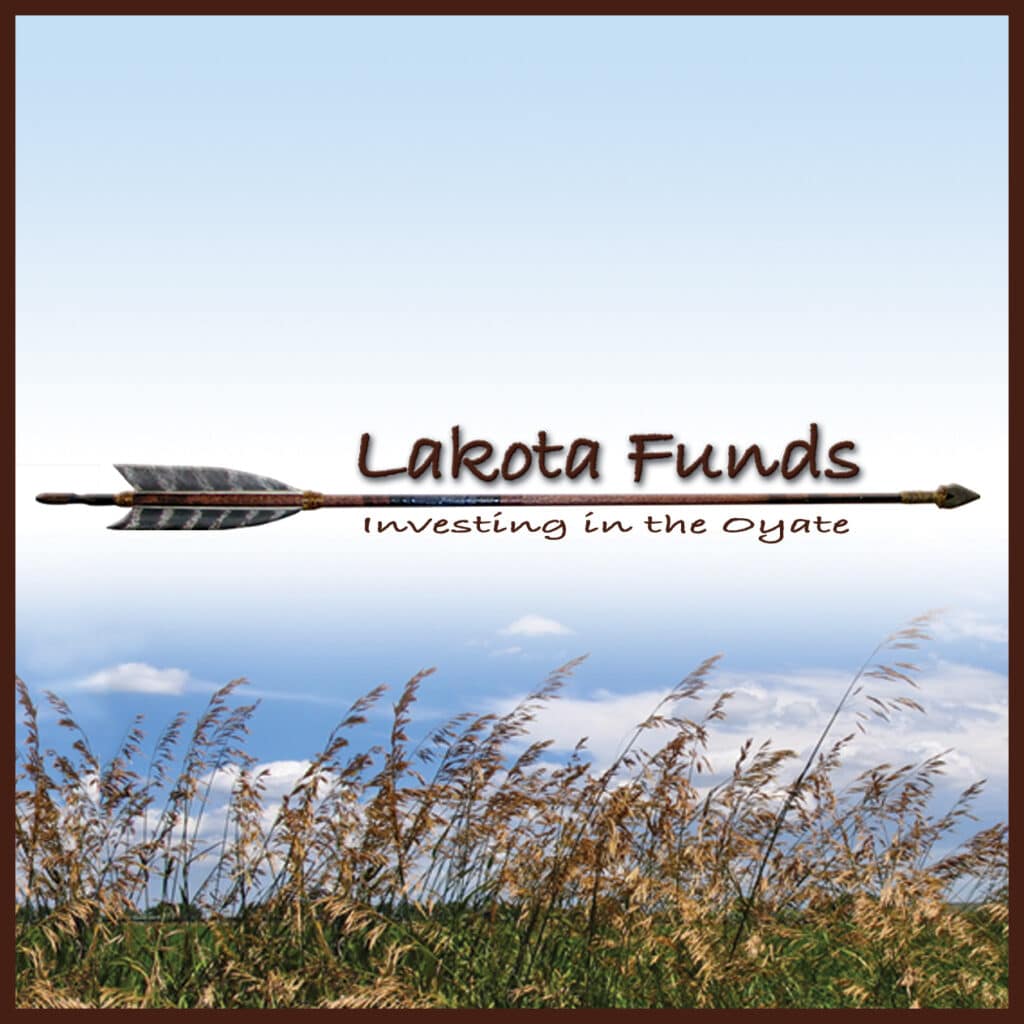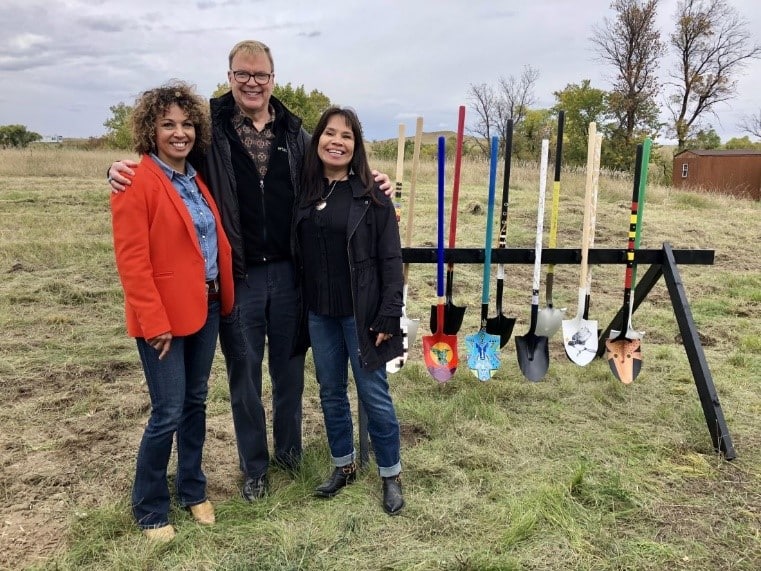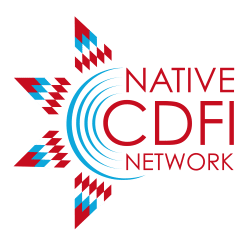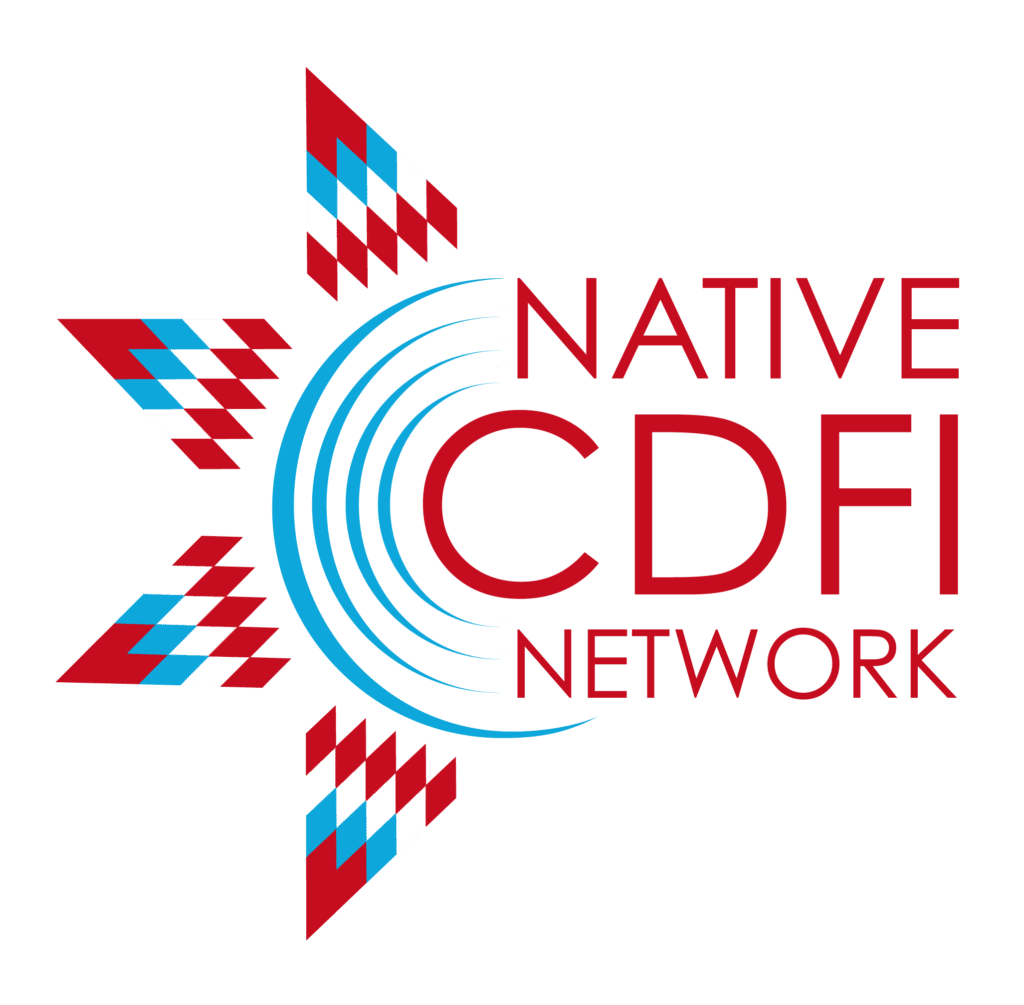The Native CDFI Network (NCN) developed the “Native CDFIs: Difference Makers for Indian Country” interview series to cast a much-needed spotlight on the many positive benefits that Native community development financial institutions (CDFIs) create for tribal communities and the leaders who help make Native CDFIs the transformational success stories they are.

A member of the Oglala Sioux Tribe, Tawney is nationally known for her community development efforts and serves on several boards and advisory committees, including the Native CDFI Network’s Policy Committee, the Federal Home Loan Bank of Des Moines Advisory Council, and the Community Advisory Council of the Federal Reserve Board.
In this wide-ranging conversation with NCN, Tawney shares Lakota Funds’ nearly four-decade track record of helping to grow the Pine Ridge economy through homeownership, small business lending, financial literacy, and other wealth-building initiatives.
NCN: Why do you do what you do? How did leading Lakota Funds become your life’s calling?
Brunsch: The answer to your question is simple – the universe guided me here. I was very happy at Black Hills Federal Credit Union, one of the biggest credit unions in the nation. I loved their philosophy – members helping members. We were doing the types of loans that nobody else wanted to do. It was very mission-driven work, which I loved. And lo and behold, out of the blue, Dowell Caselli-Smith, who was the director of Lakota Funds at that time, called me and said, “How would you feel about moving back home and putting that economics degree to work?” And I am thinking, “What? Why?” Ultimately, I did it because it was an opportunity to move back home. While I didn’t even understand what a CDFI was at the time, it was perfect to practice some of the things you learn in theory about economics and also to have an opportunity to make some institutional changes that are not only impacting our community right now but will continue to have those impacts on future generations. It was meant to be.
NCN: As you know, there are more than 70 federally certified Native CDFIs across the country and many more “emerging” CDFIs following in their footsteps. Why did Native communities feel it necessary to create CDFIs, and what fundamental role do they play?
Brunsch: Native CDFIs are critical in growing economies in the Native communities we serve. Coming from heavily regulated institutions like Black Hills Federal Credit Union, where you have to do everything within certain guidelines, I understand how restrictive that can be. CDFIs were created by Treasury for the purpose of creating programs, loan products, and those models that fit that community. That’s critical because our borrowers are not comfortable with traditional lending and have a kind of deserved mistrust of federal government and federal agencies. They’re going to be resistant to it. The fact we are a Native organization – and especially with Lakota Funds being tribally chartered – there’s a built-in level of comfort. Because we are also led by tribal members who are from this community, Lakota Funds has really been able to optimize that model of Native CDFIs to the max. We’re using what we know of the community to create the loan products that fit them, to create that technical assistance, the classes, the delivery, and the outreach that fits this community best. We’re doing that because we can as a Native CDFI and we’re doing it better because we’re local, because we are tribal members ourselves. Six of Lakota Funds’ seven board members are not only tribal members but tribal members from Pine Ridge.
NCN: Following up on that, Lakota Funds also filled a significant void at Pine Ridge, which has had few local lending institutions to speak of, did it not?
Brunsch: The credit union was the first bank to be located on the reservation. So for Lakota Funds, it’s proximity. It’s relationships. It’s the fact we are a tribal charter. But it’s also that we’re meeting our clients where they are. We know there’s going to be a certain amount of education needed even in our vocabulary – that we’re using words that are easily understood when you’re talking about equity and you’re working with a population that is 60 percent unbanked. You have to be careful how you’re defining your products and talking about them in the communities. It’s making sure we’re communicating effectively and knowing that trust land prevents our borrowers from meeting any loan to value, where you don’t have that as an asset to be able to secure the loan. We know it’s something that’s going to be harder to do here, so none of our products require the types of ratios that bank loans do. So it’s knowing it, living it, and then applying it to your loan products.
NCN: Isn’t part of it, too, the folks there at Pine Ridge having much greater confidence in Lakota Funds having their best interests at heart, as opposed to those traditional lenders that have their own best interests at heart?
Brunsch: Absolutely. The fact we’re a nonprofit, we are mission driven, and it’s not just about a bottom line. It’s not just about generating profit for the institution. We’re 36 years old. Even though generating a profit will never be our top priority, we are realizing if we want to be around to serve the next generations that we do have to be more mindful of self-sufficiency and not always be grant reliant. We are more aware of that and careful that our interest rates, our earned income is eventually going to be sufficient enough to cover our operating costs and allow us to continue serving this market. Our self-sufficiency ratio was 30-some percent 10-12 years ago, and now we’re up to nearly 50 percent. I feel strongly about making sure Lakota Funds is around to continue this work, and that is done by achieving a certain level of self-sufficiency.
NCN: What do policymakers and the general public need to understand about Native CDFIs and the difference they make?
Brunsch: It’s the fact we’re doing the loans that nobody else wants to do, and the fact we’re serving an area where there are no other institutions to even reach out to to consider those loans. What I’ve been bragging about lately is not only is Lakota Funds increasing its loan volume – which I think demonstrates the success of Native CDFIs in general – but our deployment has doubled in the last three years. Last year, we did $5 million in loans very efficiently. I had one-and-a-half lenders. There’s only five staff. We’re serving two reservations that cover more than 5,000 square miles. We assisted 100 clients last year with business loans. We have less than a one percent delinquency rate, 0.6 percent. These are loans that are being repaid.

NCN: Tell me about Lakota Funds. What is its mission, and how does it work to foster prosperity in the communities it serves?
Brunsch: Lakota Fund’s mission is to promote economic sustainability on the Pine Ridge Reservation and geographic service area through business loans, technical assistance, and wealth-building education for families and businesses. We are one of the few institutions that are offering our tribal members direct access to credit for business loans. Outside of the tribe, we are the only ones who are contributing to the businesses that drive the economy. The bigger part of it is technical assistance and wealth building. Wealth building includes a lot more than just business lending. It includes home ownership. As a HUD-certified housing counseling agency, Lakota Funds is partnering with Lakota Federal Credit Union, which does the mortgages. Lakota Funds does the heavy lifting in some ways, and that is getting our families ready for homeownership. That’s through the technical assistance, the teaching of classes, the financial literacy, the homebuyer readiness – all of the things that go into making sure they understand what owning their own home can mean. Once they’ve got their homes bought, are they more likely to participate in our child development account, the matched savings accounts that are used to pay for a secondary education for kids? Are they more likely to feel comfortable pursuing that dream of owning their own business? Absolutely. It’s all tied together, and Lakota Funds as a Native CDFI can offer all of these things under one roof.
NCN: Can you talk about how the private-sector economy – businesses owned and operated by tribal citizens – has grown at Pine Ridge, and Lakota Funds’ role in cultivating that growth?
“In the last two years, our [small business] borrowers have seen an increase in their incomes of just over 30 percent…They’re also some of our biggest employers.”
Brunsch: When you’re driving through Kyle or Pine Ridge, there’s a noticeable difference in the businesses that are visible. But unfortunately, most of our communities lack the infrastructure. We don’t have the streets, curbs, gutters, access to water and sewer, and the store fronts. So we don’t necessarily see many more of those businesses. But for the most part, Lakota Funds’ loans are to the businesses that don’t need those storefronts. Just over half of our portfolio now is to our ranchers, our livestock producers. So you’ve got a business that is supporting two or three families and is very likely to be passed on to future generations. Is it a store front? No. Is it generating income that’s going to support the growth of the economy? Absolutely. In the last two years, our borrowers have seen an increase in their incomes of just over 30 percent. The other big portion of our portfolio is our construction contractors and related businesses. These are individuals who are building homes or structures. They’re doing very well. They’re also some of our biggest employers.
Another thing I wanted to brag about is we’re increasing credit scores. Low credit scores is a big initial barrier to accessing credit in traditional forms. Being a Native CDFI, just because you have a 599 credit score doesn’t mean you’re going to be disqualified from getting a business loan. It means we’re going to work with you. With the good repayment rates we’re seeing, now those individual scores are increasing. They’re going to be more bankable and ready for that next level of financing.

NCN: Lakota Funds has helped an extraordinary number of people. Is there an individual’s client success story that really sticks out to you, that really inspires you?
Brunsch: I would say my experience with Carol Two Crow, who was an elder living in Lakota Funds’ LIHTC [Low-Income Housing Tax Credit Program] housing. She was lucky enough to live with three of her adult children and her grandkids in the same house. So when Eagle Nest Housing became free from the LIHTC restrictions and we were able to offer those homes as homeownership opportunities, the whole community was a little resistant at first to taking that next step. Instead of being excited about being able to own their own home, their first question was, “Who will come over and fix the furnace?” So it was fear, and I came to understand how we were going to have to frame this differently because an asset on a balance sheet doesn’t mean much to them. In a conversation I had with Carol, she said, “I feel like I should do this, but I’m not quite sure.” She was unsure of taking the leap to borrow $60,000 to buy her home and make the renovations. I said, “Carol, it would mean being able to take care of your family for generations.” Even after she was gone, she would be at peace knowing her grandkids would have a place to live. With that, she understood and went wholeheartedly forward.
NCN: From your perspective, what do Native CDFIs like yours need to realize their full potential? What support do they need to achieve their missions and maximize their impact?
Brunsch: We need bigger NACA [Native American CDFI Assistance] awards from the Department of Treasury. I’m sorry to sound that way, but honestly, our loan volume is growing. Our Native CDFIs are growing. It’s time that we have a grant that meets those needs. I also want to see a Native set-aside on the bond program because there are a group of us more mature Native CDFIs and even some that are emerging that want to partner to apply for a bond. We’re there. We’re ready. The lack of loan capital always holds us back. I shouldn’t have to stop everything I’m doing and start shaking trees for more money because I don’t have access to investment or the types of loan capital I need for lending. It shouldn’t be that way. We need steady, consistent, low-cost access to capital. We need more investment.
To learn more about Lakota Funds, please click here.

